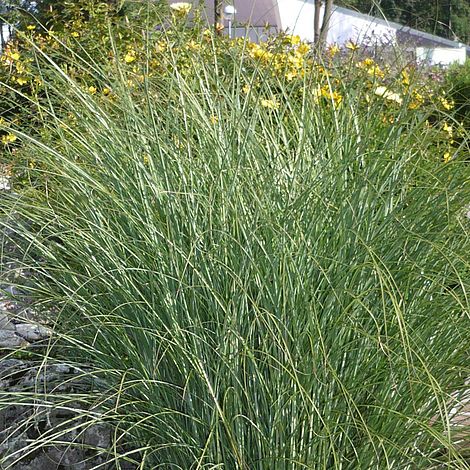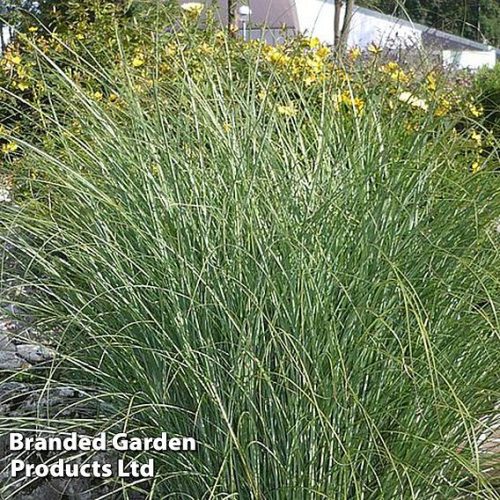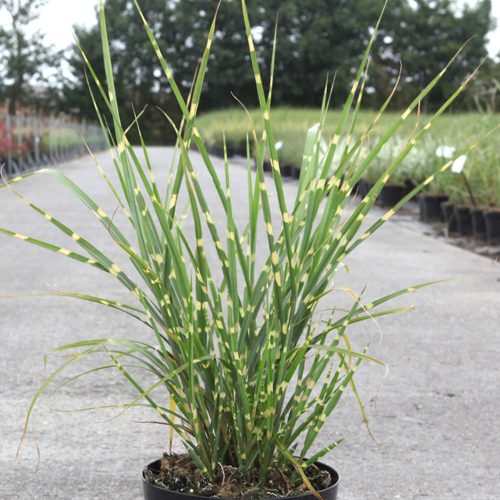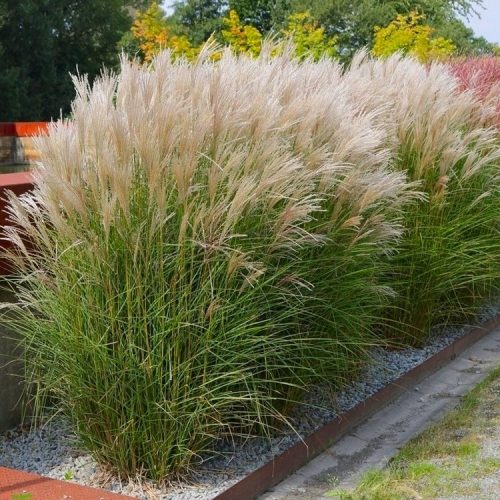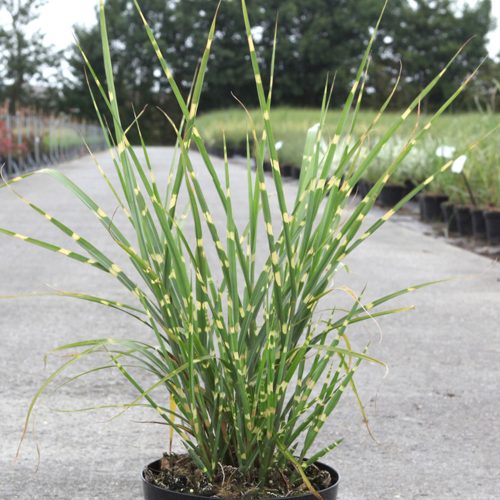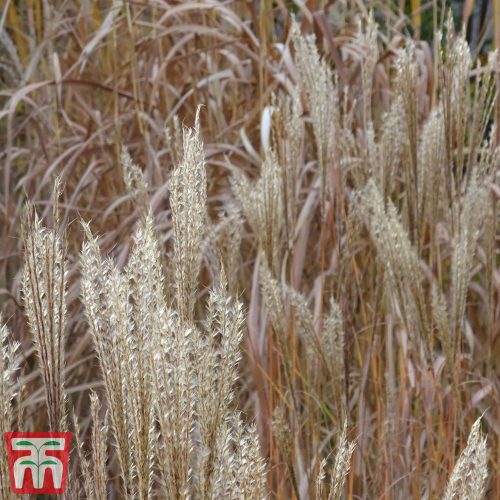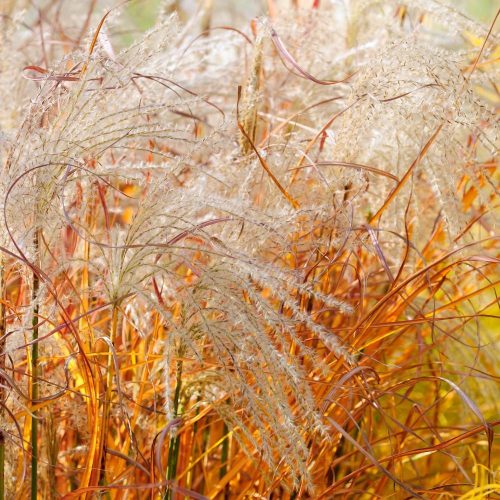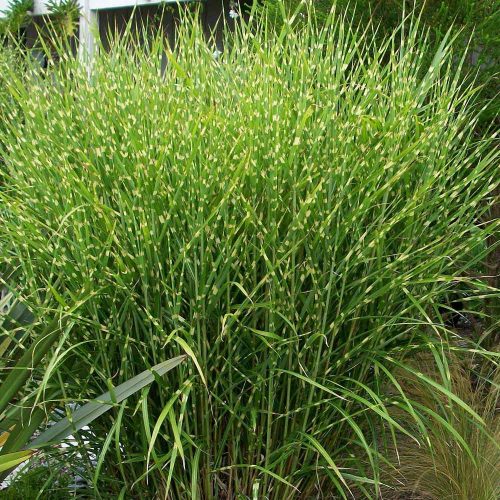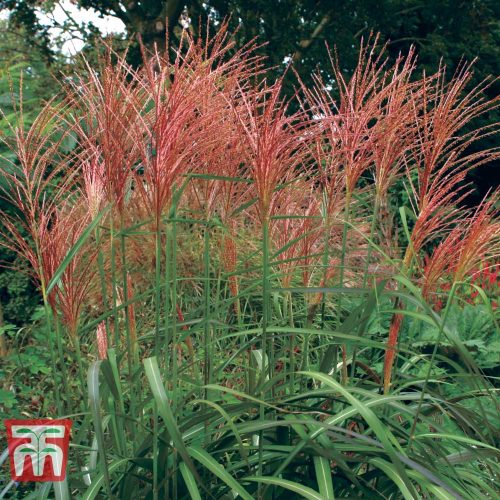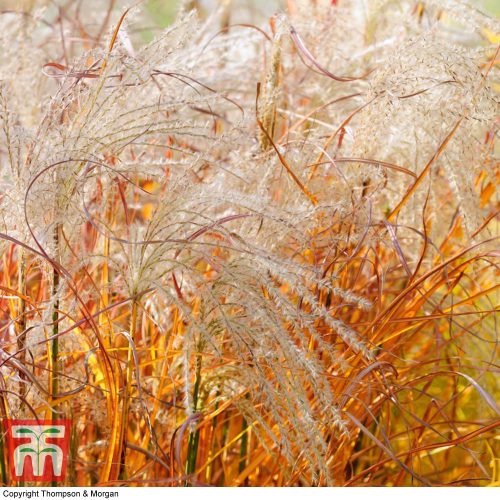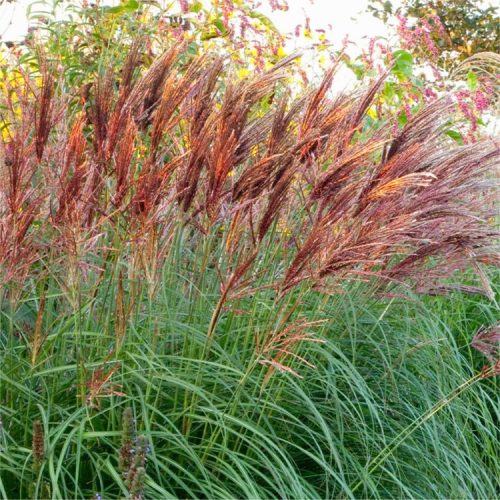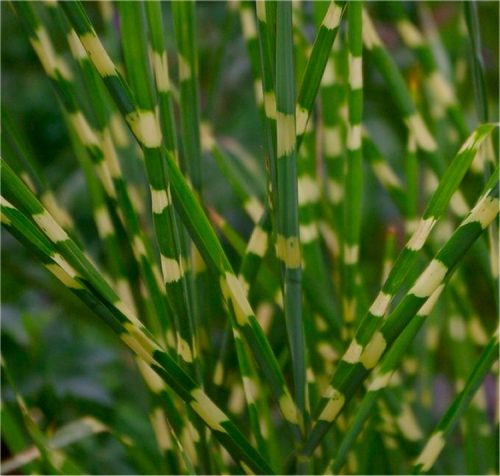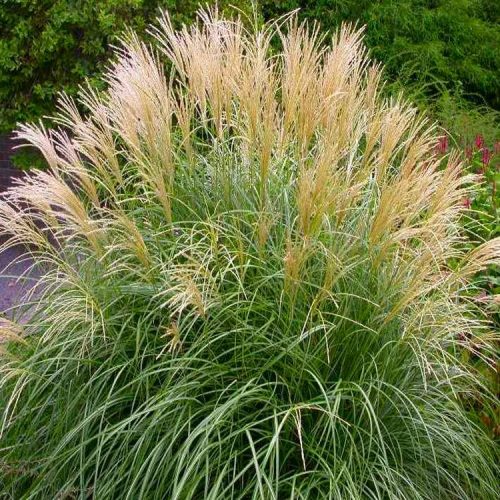 Ornamental Grasses – Exotic & Tropical Grasses
Ornamental Grasses – Exotic & Tropical Grasses
Arundo donax Variegata Compact
Grasses are not normally associated with exotic gardens, which is a shame because they add movement and verticality ad are a good substitute for plants we can’t grow in our more temperate climate. Whether short or exceedingly tall, grasses give height, stature, and form, many with a very architectural appearance, with the added attraction that the foliage catches the wind, adding motion to the landscape. If space is limited, use some of the smaller species and cultivars, which look especially good weeping over the sides of pots and containers. I have also included a few other plants here that have similar spiky or grassy feel to them. I love to grow Miscanthus here in the UK!
Ornamental Grasses
Ornamental grasses are an important part of gardens used to create structure. They come in varying sizes as tall ornamental grasses, short ornamental grasses, low-growing ornamental grasses or high ornamental grasses.
Also, they create an attraction with beautiful foliage that catches the wind and creates ornamental shade in the landscape. They are classified into cool-season ornamental grasses, warm-season ornamental grasses, and evergreen ornamental grasses.
Additionally, the planting methods and care differ depending on the type of ornamental grasses and their location. For instance, ornamental grasses in the UK will have a different care procedure from ornamental grasses in other temperate regions.
Types Of Ornamental Grasses
Arundo Donax
This is a clump-forming, rhizomatous, perennial, evergreen ornamental grass. It can be found growing in boggy areas like lakes, riverbeds, streams, and beside ponds. Sometimes regarded as an invasive plant because its bamboo-like foliage and stems are quick to spread and can take over your garden if not checked. It is relatively easy to maintain as long as it is grown in moist soil with full exposure to sunlight. Lastly, for the best foliage, cut back the growth annually to give room for new foliage to develop.
Carex Ornamental Grasses
This genus of ornamental grasses contains over 1500 species of evergreen ornamental perennials. They are found growing in diverse habitats in different regions and climates. They are cultivated for their shapes, sizes, and sometimes variegated foliage. These versatile perennials are extremely hardy with some species being hardier than others. They are best grown in a gravel garden or groups around shady corners.
Where to buy ornamental grasses in the UK?
General Care For Ornamental Grasses
This section will address the most common concerns about cultivating ornamental grasses including when to plant them, when and how to cut them down, and how to divide ornamental grasses.
When to plant ornamental grasses
The best planting season for ornamental grasses is in spring to early fall because the summer heat and dry weather will give them enough time to establish a strong root network before the stressful winter season.
Planting in summer may create more stress in the care process because they have to be constantly watered to avoid dehydration and drying up in the summer heat. If you miss the planting window in spring then wait for the early autumn which is still about 6-8 weeks before the first signs of frost; that is ample time for the plant to develop.
When to cut back ornamental grasses
A great majority of plants including trees, shrubs, and grasses lose their colours in autumn as the weather becomes colder and most ornamental grasses are not different. Once your ornamental grasses that thrive in the warm season begin to turn brown then you know it is time to cut them back.
Cutting these browning grasses back will help you to keep your garden neat but if you don’t mind the brown colours in your garden then you can leave them through the winter since snow encrusted on the grasses makes a beautiful view. However, be sure to cut them down to a few inches above the ground to allow new growth to spring out in the next growing season.
How to cut down ornamental grasses
Begin by getting your equipment ready. All you need are pruning shears, a power hedge trimmer, and tapes or bungee cords.
Tie the grass into bundles: Cutting down ornamental grasses can get messy especially with the size of the ornament grass being cut down. To lessen the mess, put your gloves on and begin separating the stalks into bundles using the bungee cords or tapes to hold each bundle. Some stalks may need to be bundled separately depending on the size.
Cut the grass: After bundling the stalks of grasses you can begin cutting the stalks a few inches below the tapes with your pruning shears or a power hedge.
Clean up: The bulk of the work is the cutting and now that you’re done look around for some of the grass that escaped the trimming and go in with your pruning shears to level it out. Proceed to use a rake to clear up the stalks of grass left on the garden floor.
When to divide ornamental grasses
You can increase the number of plants in your care without spending a dime by dividing the grasses. Dividing ornamental grasses help the grasses to keep growing actively and renew older grasses. According to the classification of ornamental grasses; divide warm-season grasses in spring and mid-summer, divide cool-season grasses in spring and early fall, divide evergreen grasses in spring.
How to divide ornamental grasses
Simply use your hands, pruning shears, a spade or a shovel to separate some grasses from the sides of large clumps. Alternatively, you can dig up the entire plant, split it in half or quarters and proceed to replant.
FAQ
When do you cut back ornamental grasses?
You can cut back ornamental grasses at any time. Ideally, you should cut back your ornamental grasses when they start to turn brown in autumn or mid-late spring. Trim them till they are only a few inches high.
Are ornamental grasses evergreen?
A large percentage of ornamental grasses are not evergreen, rather they are deciduous plants that die back and begin changing colour in autumn before reviving for the next growing season in spring. However, some ornamental grasses are evergreen and remain green in winter.
Do ornamental grasses need to be cut back?
Cutting back your ornamental grasses is not mandatory, but you can cut them back when it begins to change colour in the fall to prepare them for the next season and can also be cut back for pruning purposes.
How do you divide ornamental grass?
The division of ornamental grasses is simple. Simply divide from the sides of large clumps with a spade or shovel. Alternatively, you can dig up the entire plant, split it in half or quarters and proceed to replant.
Can ornamental grasses be divided?
Yes, ornamental grasses can be divided for the sake of replanting or to reduce the size of a clump and prevent larger plants from losing their attraction.
How do you prune ornamental grasses in spring?
Pruning ornamental grasses is a simple task and all you need are pruning shears, a power hedge trimmer, and tapes or bungee cords. Use the tapes and bungee cords to tie the plants into bundles, and go in with the power hedge trimmer and cut off the grass from just below where the tape is holding the grass. Finish up with pruning shears for the loose hairs outside the bundle.
Should I cut back ornamental grasses?
It is not compulsory to cut back ornamental grasses but you can prune them when it starts to turn brown to prepare them for the next growing season.

